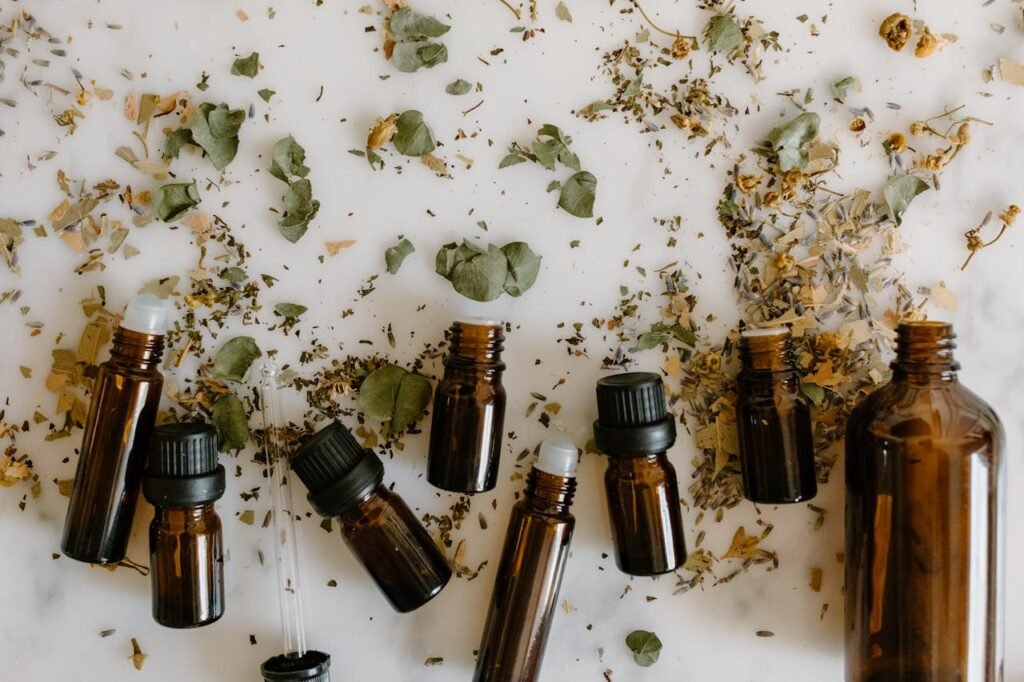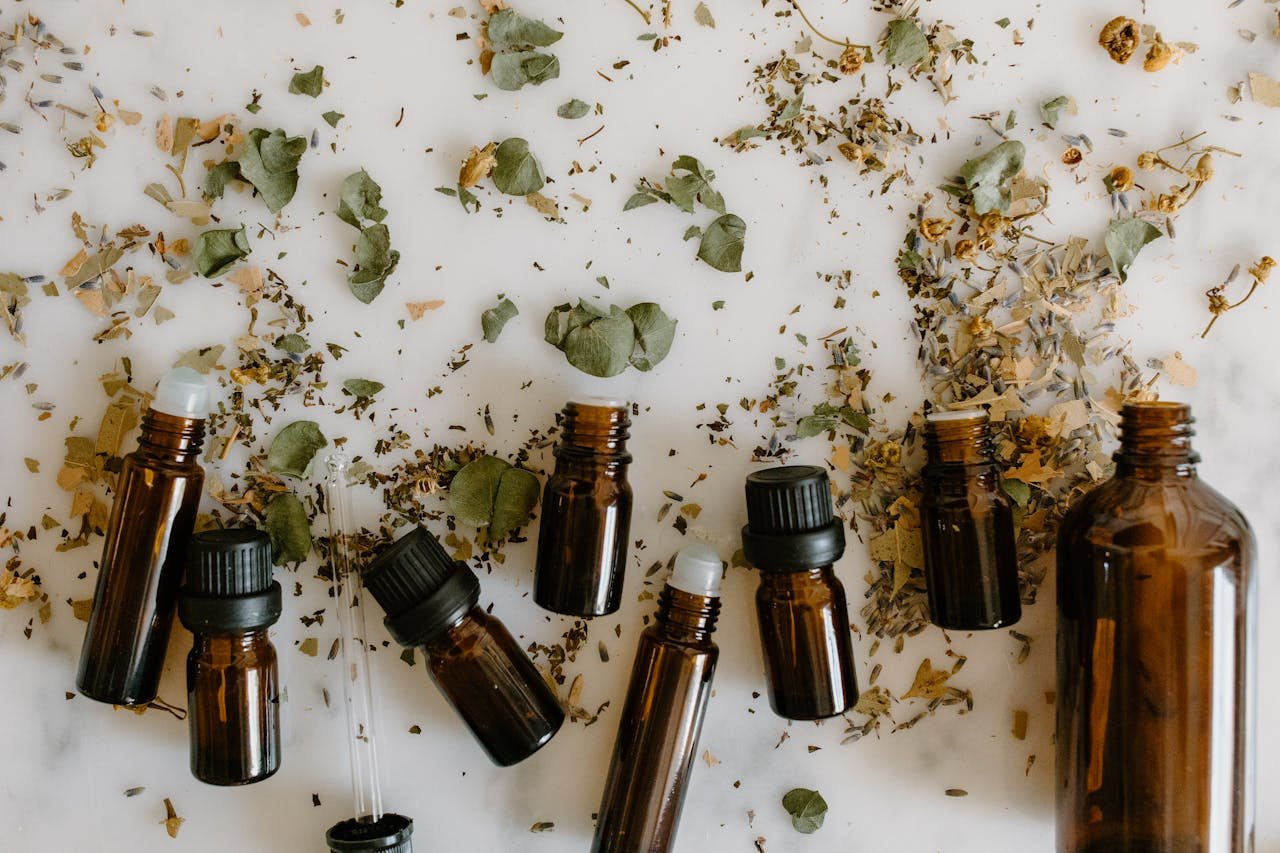Essential oils have gained popularity as a natural remedy for headaches due to their pain-relieving, anti-inflammatory, and stress-reducing properties. However, while these potent plant extracts offer numerous benefits, it’s essential to use them correctly to avoid potential risks. Improper use of essential oils can lead to skin irritation, allergic reactions, and even toxicity, especially when applied in high concentrations or ingested.

When using essential oils for headaches, following safety guidelines ensures that you can enjoy their benefits without harmful side effects. From proper dilution to understanding contraindications and sensitivities, being informed is the key to safe and effective aromatherapy.
In this guide, we’ll cover essential safety tips to keep in mind when using essential oils for headache relief, including dosage recommendations, application methods, and precautions to avoid unwanted side effects.
Safety Tips for Using Essential Oils for Headaches: A Comprehensive Guide
1. Proper Dilution for Safe Topical Application
Why dilution is essential
Essential oils are highly concentrated, and applying them directly to the skin without dilution can cause irritation, burns, or allergic reactions. For headache relief, many essential oils like peppermint, lavender, and eucalyptus are applied topically to the temples, neck, or forehead. To ensure safe use, it’s crucial to dilute these oils with a carrier oil.
Recommended dilution ratios:
- For adults, a general guideline is to use a 2-3% dilution, which equates to about 10-15 drops of essential oil per ounce (30ml) of carrier oil.
- For children or individuals with sensitive skin, a lower dilution of 1% (about 5 drops of essential oil per ounce of carrier oil) is recommended.
- Always patch-test the diluted oil on a small area of skin (like the inside of the elbow) before full application to check for any adverse reactions.
Best carrier oils for dilution:
- Coconut oil: Lightweight and fast-absorbing, ideal for applying to the forehead and temples.
- Jojoba oil: Closely resembles the skin’s natural oils, making it excellent for sensitive skin.
- Sweet almond oil: Rich in vitamins and suitable for all skin types.
Precautions for topical use:
- Never apply essential oils directly to broken skin, cuts, or abrasions.
- Avoid sensitive areas like the eyes, inner ears, and mucous membranes.
- If irritation occurs, wash the area with soap and water and discontinue use.
2. Inhalation Safety: How to Avoid Overexposure
Benefits and risks of inhalation
Inhalation is one of the quickest and safest ways to use essential oils for headache relief, especially for migraines and tension headaches. Whether you use a diffuser, steam inhalation, or direct inhalation from a tissue, it’s important to practice safe inhalation techniques to avoid overexposure, which can lead to dizziness, nausea, or respiratory irritation.
Safe inhalation techniques:
- Diffusing essential oils: Use a diffuser to disperse essential oils into the air. Keep the diffuser running for 15-30 minutes at a time, with intervals of fresh air, to avoid overwhelming the room.
- Steam inhalation: Add 2-3 drops of essential oil to a bowl of hot water. Cover your head with a towel and inhale the steam for 5-10 minutes. Avoid using too many drops, as concentrated vapors can cause respiratory discomfort.
- Direct inhalation: Place a drop of essential oil on a tissue or inhale directly from the bottle for quick relief. Be cautious not to inhale essential oils continuously for long periods, as this may lead to light-headedness.
Ventilation and space considerations:
- Ensure that the space is well-ventilated when using a diffuser or steam inhalation to prevent an overpowering aroma.
- Avoid using essential oils in enclosed or poorly ventilated areas where fumes can accumulate.
3. Know Your Sensitivities: Allergies and Contraindications
Recognizing allergic reactions
Some individuals may be allergic or sensitive to certain essential oils. Even common oils like lavender, peppermint, or eucalyptus can trigger allergic reactions in people with sensitivities. Before using any new essential oil, it’s vital to perform a patch test and be aware of your own allergic triggers.
Signs of an allergic reaction:
- Redness or itching at the application site.
- Hives, swelling, or blistering after topical use.
- Difficulty breathing or wheezing after inhalation.
Common essential oil sensitivities:
- Peppermint oil: Known for its potency, peppermint can cause skin irritation, especially in individuals with sensitive skin.
- Citrus oils (like lemon or bergamot): These oils can make your skin more sensitive to sunlight, increasing the risk of sunburn (a condition known as photosensitivity).
- Eucalyptus oil: While effective for sinus relief, eucalyptus can trigger asthma-like symptoms in some individuals when inhaled in high concentrations.
Contraindications with medical conditions:
- If you have asthma, epilepsy, or are pregnant, consult with a healthcare professional before using essential oils, as some oils can exacerbate certain conditions or pose risks during pregnancy.
- For individuals on medications, be aware of potential interactions between essential oils and pharmaceuticals. For example, rosemary oil may raise blood pressure and should be avoided by individuals with hypertension.
4. Safe Usage for Children and Pets
Children’s sensitivity to essential oils
Children, especially infants, are more sensitive to essential oils than adults, and improper use can lead to adverse reactions. When using essential oils for headache relief in children, always ensure you are using oils that are safe for their age and apply them at a lower dilution.
Age-appropriate essential oils:
- Infants (0-2 years): Avoid using essential oils directly on infants. If necessary, oils like lavender and chamomile can be diffused in small amounts.
- Children (2-6 years): Oils such as lavender, chamomile, and mandarin are generally safe for topical use at a 1% dilution.
- Children (6+ years): At this age, oils like peppermint, eucalyptus, and tea tree can be used, but still at lower concentrations (1-2%).
Essential oils to avoid in children:
- Peppermint and eucalyptus should not be used on or around infants and very young children due to the risk of respiratory issues.
Safe usage around pets
Many essential oils, while safe for humans, can be toxic to pets. Cats and dogs are especially sensitive to essential oils, so take extra precautions when diffusing oils or using them in areas where pets are present.
Pet-safe essential oils:
- Lavender and chamomile are considered safe for pets when used in small amounts.
Essential oils to avoid around pets:
- Tea tree, peppermint, and citrus oils (like lemon or lime) are toxic to both cats and dogs. Avoid diffusing these oils in areas where your pets spend time.
5. Avoiding Essential Oil Toxicity: Signs and Solutions
Understanding essential oil toxicity
While essential oils are natural, they are also highly potent and can be toxic if ingested or overused. Ingesting essential oils can lead to severe health issues, including nausea, vomiting, seizures, and even organ failure. Similarly, excessive topical use without dilution can lead to systemic toxicity.
Symptoms of essential oil toxicity:
- Nausea, dizziness, or confusion.
- Difficulty breathing or swallowing.
- Skin burns or blistering.
- Seizures or loss of consciousness (in extreme cases).
Steps to avoid toxicity:
- Never ingest essential oils unless under the guidance of a healthcare professional trained in aromatherapy. Even oils that are deemed safe for internal use should only be taken in extremely small, controlled doses.
- Use in moderation: Overusing essential oils, whether topically or through inhalation, can overwhelm the body’s systems, leading to toxicity. Follow the recommended dosage for each type of application.
What to do in case of overexposure:
- If you experience any signs of essential oil toxicity, seek immediate medical attention.
- For skin reactions, rinse the affected area with soap and water to remove any residual oil. Apply a soothing cream or oil (like aloe vera or coconut oil) to the area if irritation persists.
- If essential oils are accidentally ingested, call your local poison control center or emergency services for advice.
Conclusion:
Using essential oils for headache relief can provide an effective and natural alternative to medication, but it’s essential to follow safety guidelines to avoid adverse reactions. Whether you’re applying oils topically or inhaling them, always dilute appropriately, be mindful of your sensitivities, and take extra precautions with children and pets. By adhering to these safety tips, you can enjoy the benefits of essential oils while minimizing any potential risks.
Understanding the correct usage of essential oils ensures not only effective headache relief but also a safe and enjoyable aromatherapy experience. With the right precautions in place, essential oils can be a powerful tool in your holistic health routine.

















